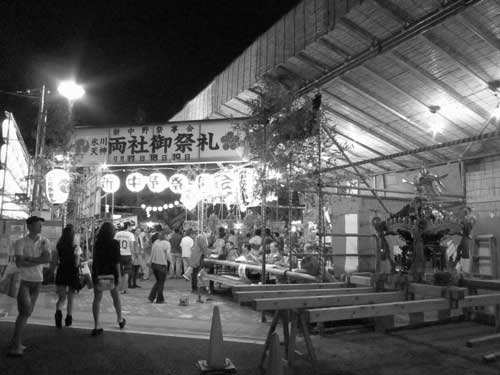
The lanterns announce that the omatsuri festival will be happening Using simple plumbers’ fixtures and scaffolding, flexible and removable frames for lighted paper lanterns are erected all over the city.
I find omatsuri incredibly charming: a public street festival evoking rice farming and harvests, organized in Tokyo around tiny local shrines, work organizations, and local associations. A friend told me that in his town, the whole town celebrates together. But in the large megalopolis of Tokyo, the intensely local nature of each celebration is very personal and social.
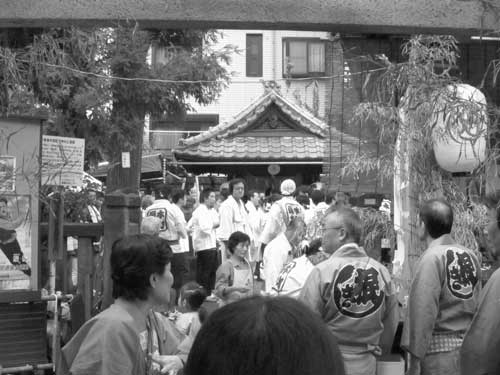
Members of my apartment building are some of the main leaders of our local shrine’s festivities, which includes children’s and adults’ parading through the streets with portable shrines, flute, drum and bell music, (Japanese) lion dancing, traditional clothes including hapi (cotton jackets), and lots of public drinking.
At the shrine, one of my neighbors offered me a free shaved ice. I hesitated to accept other offers of food or drink because I did not want to be carrying the portable shrine; I know from experience that this is best left to younger and drunker participants.
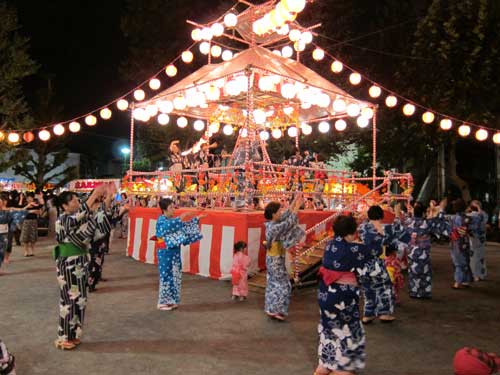
Just in the other direction, on the same weekend, a small park gets transformed into a space for dozens to do “bon” dancing around a raised platform. Mostly seniors, they dance to various traditional and regional songs, while wearing yukatas. Children and even dogs come wearing this summer kimono. Unlike the local shrine, this small park has an area for more commercial “omatsuri” games and foods, including delicious mini-cakes, the ever present chocolate banana on a stick, yakisoba, takoyaki, okonomiyaki, and more shaved ice.

I experimented this time with black-and-white photos that seem to make the event more timeless and nostalgic. It’s funny to see something very contemporary, like a child taking a cellphone photo of her chocolate banana, using this backward-seeming technology and juxtaposed with dances and music that may be centuries old. There’s something timeless about cast iron pans used over a gas grill to make the small cakes sold 12 or 40 to a bag.
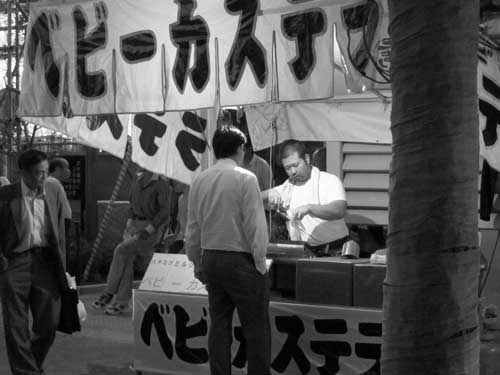
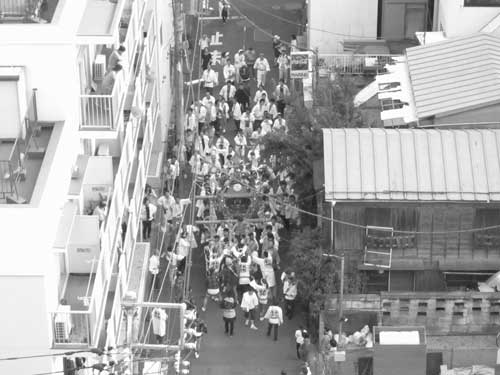
I feel a certain surge of excitement when the portable shrines enter the large boulevard or fill the small streets radiating out from it. The shrine is very heavy, and there’s a definite camaraderie formed by sharing this load.
I’ll end the post with a short video of the dancing. The drumming and bells are live, and the other music and voice from an old CD player and simple amplifier sound system.



